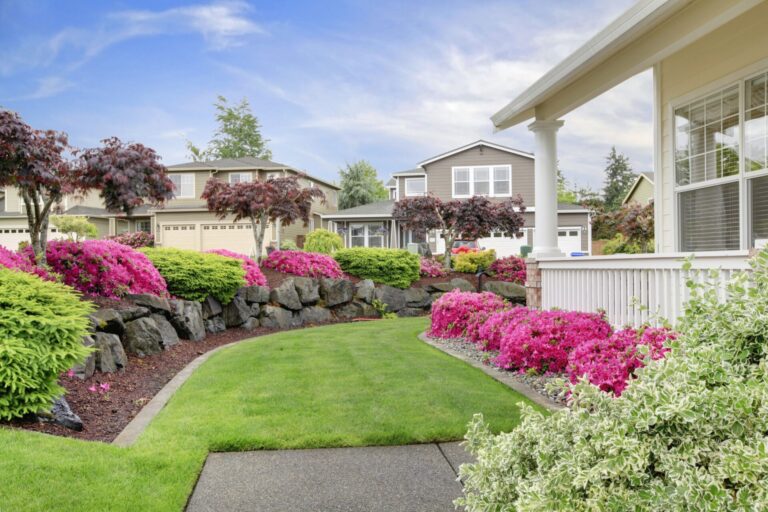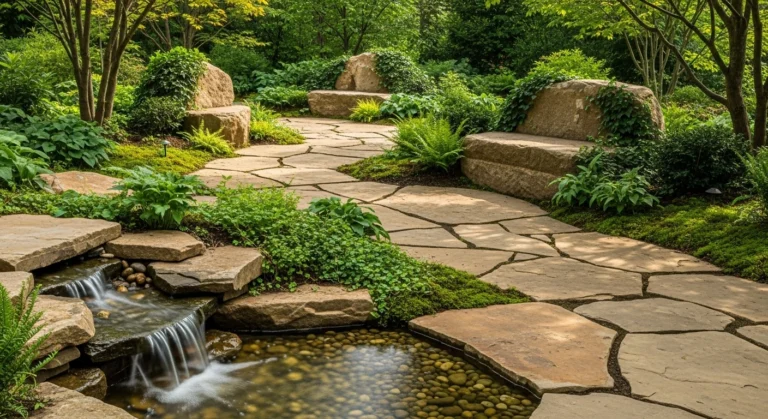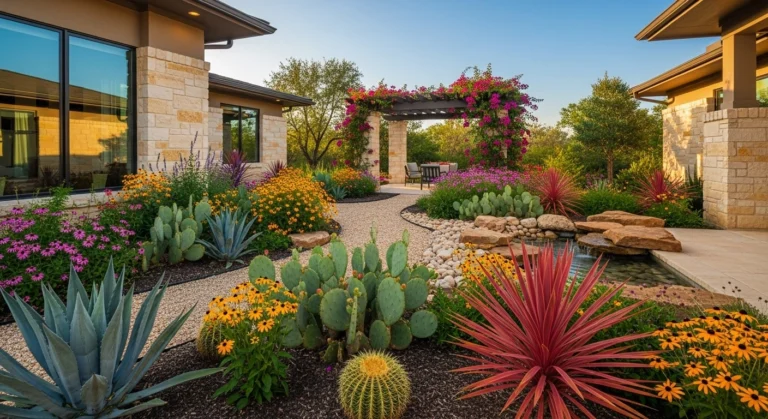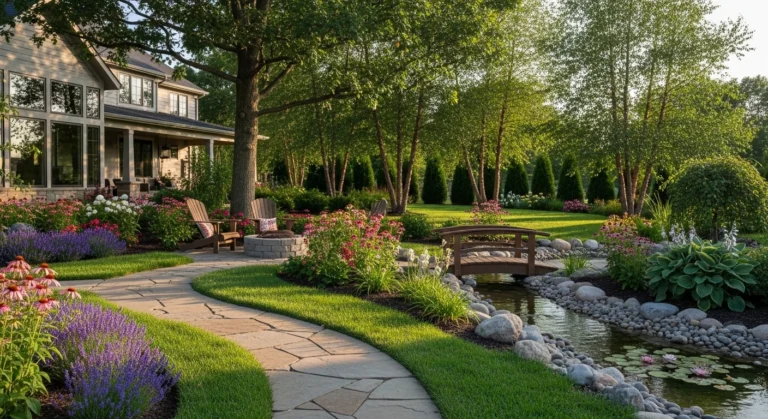Smart Drainage Strategies for Waco Landscapes
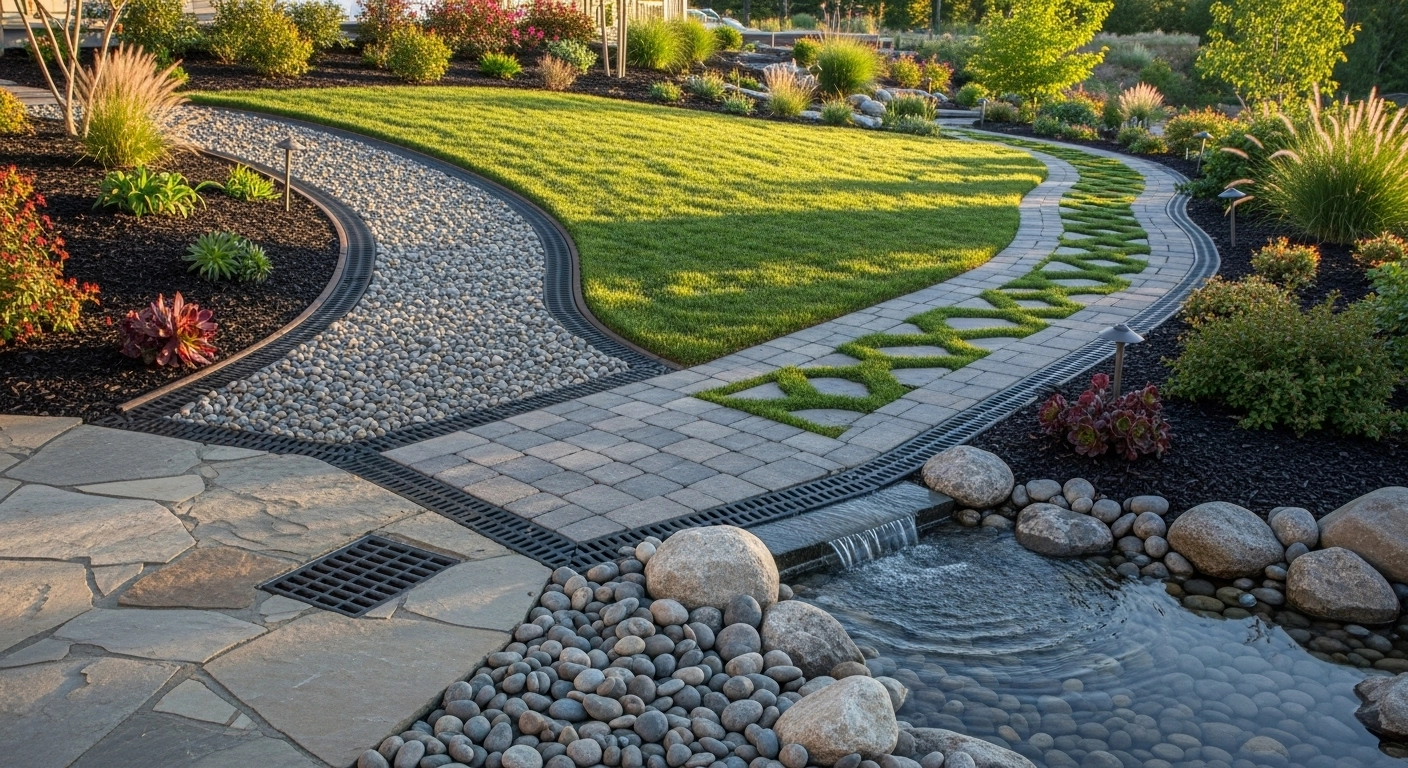
Nothing ruins a beautiful Saturday morning like discovering your backyard has turned into a miniature lake after last night’s thunderstorm. You step outside with your morning coffee, ready to enjoy your outdoor space, only to find standing water where your kids should be playing and soggy patches that squelch under your feet. We’ve helped countless Waco homeowners who felt trapped by their own yards, unable to use outdoor spaces for days after every rainfall because water management was never properly addressed. The embarrassment of having guests avoid certain areas of your property, combined with the constant worry about what this water is doing to your home’s foundation, creates stress that no homeowner should have to endure.
The transformation we see when homeowners take control of their water drainage is remarkable – and it’s more achievable than most people realize. At Lawn Care Waco, we’ve developed time-tested strategies that turn water from your landscape’s biggest enemy into a valuable resource that actually enhances your outdoor living experience. The secret isn’t fighting against Central Texas weather patterns but learning to work with them through intelligent design and proper installation techniques. When your drainage works correctly, those heavy spring rains become something you welcome rather than dread, knowing they’re nourishing your landscape without causing damage to your property.
The Hidden Costs of Ignoring Water Management
Every week, we meet homeowners who wish they’d addressed their drainage issues years earlier, before the problems became expensive emergencies. Water infiltration doesn’t just affect your landscape – it systematically undermines your property’s structural integrity, starting with subtle signs that most people dismiss as minor inconveniences. That basement mustiness, the slight crack in your foundation wall, or the way your patio seems to be settling unevenly are often early warning signs of drainage problems that have been developing for months or even years.
The financial reality hits hard when you add up the true cost of poor drainage over time. We’ve worked with clients who spent thousands replacing plants that kept dying in waterlogged soil, only to have the same problem recur because they never addressed the underlying water flow issues. Property damage from water extends far beyond obvious flooding – it includes soil erosion that undermines walkways, moisture problems that encourage termites and other pests, and the gradual degradation of outdoor living spaces that families can’t fully enjoy.
What makes Central Texas particularly challenging for drainage is our clay-heavy soil combined with intense but irregular rainfall patterns. When we get those sudden downpours that drop several inches in a matter of hours, unprepared landscapes simply can’t handle the volume, leading to surface runoff that can overwhelm even well-designed systems. Smart homeowners recognize that drainage planning isn’t an expense – it’s an investment in their property’s long-term value and their family’s quality of life.
Water-Related Issues We Address Throughout Waco
Chronic Flooding and Wet Areas
Yard flooding after storms creates more than just inconvenience – it signals fundamental problems with how water moves through your landscape. We regularly encounter properties where certain areas remain unusable for days after rainfall, creating muddy messes that track into homes and preventing families from enjoying their outdoor investments. These chronically wet areas often become breeding grounds for mosquitoes while slowly killing grass and plants that can’t tolerate constant moisture.
The underlying issue usually traces back to improper grading or natural low spots that collect water with no outlet for drainage. Many properties in our area were developed without adequate attention to natural water flow patterns, leaving homeowners to deal with the consequences years later. When water consistently pools in the same locations, it’s telling you that your landscape needs help directing that water to more appropriate destinations.
Surface runoff from neighboring properties can compound local drainage problems, especially in established neighborhoods where upstream development changes affect downstream properties. We’ve seen situations where new construction or landscaping changes create runoff that overwhelms previously adequate drainage systems. The solution often involves creating buffer areas and redirect systems that can handle increased water volumes while protecting your property.
Foundation and Infrastructure Damage
Foundation settlement from inconsistent moisture around your home’s perimeter represents one of the most serious consequences of poor drainage. Central Texas clay soil expands when wet and contracts when dry, creating pressure changes that can crack foundations and cause structural shifting. We’ve witnessed beautiful homes with foundation repairs costing tens of thousands of dollars because water management was treated as a landscaping afterthought rather than a critical infrastructure element.
Basement moisture and crawl space problems often originate from landscape drainage failures rather than plumbing issues. When your yard can’t properly manage water, that excess moisture finds alternative paths – frequently leading directly toward your home’s most vulnerable areas. Professional landscaping services include water management as a fundamental component of protecting your investment.
Driveway and walkway damage from water infiltration and freeze-thaw cycles can be prevented with proper drainage design. We’ve seen concrete surfaces crack and settle when water collects underneath, creating safety hazards and expensive repair needs. The key is ensuring water moves away from these surfaces before it can cause structural problems.
Landscape Health and Soil Degradation
Plant mortality in waterlogged areas breaks our hearts, especially when homeowners have invested in quality landscaping without addressing the underlying drainage issues. Even plants that tolerate wet conditions can’t survive in constantly saturated soil, leading to root rot and the gradual death of landscape investments. We’ve helped clients who repeatedly replaced the same plants in problem areas, never realizing that soil drainage was the real culprit.
Soil erosion strips away your landscape’s foundation – literally. When water runs across the surface instead of infiltrating properly, it carries away topsoil and creates channels that grow larger with each storm. This erosion doesn’t just affect appearance; it removes the nutrient-rich soil that supports healthy plant growth and stable landscape structures.
Nutrient leaching in poorly drained soils creates a cycle where plants struggle to establish strong root systems, making them more vulnerable to both drought and flooding conditions. Our Central Texas plant selection expertise helps homeowners choose species that can thrive in their specific drainage conditions while we work to optimize water management throughout the landscape.
Evaluating Your Property’s Water Management Needs
Reading Your Landscape’s Water Signals
Observation during rainfall provides the most valuable information about your property’s drainage patterns. We encourage homeowners to watch how water moves across their landscape during moderate and heavy rains, noting where it pools, where it flows quickly, and where it seems to disappear into the ground. These observations reveal your landscape’s natural drainage personality and help identify areas that need attention.
Soil moisture patterns tell stories that aren’t always obvious from surface observation. Areas that stay consistently moist, support different vegetation, or feel soft underfoot often indicate subsurface drainage issues that require professional assessment. We use specialized tools to measure soil compaction and infiltration rates, but homeowners can identify potential problem areas by noting where grass grows differently or where walking feels unstable.
Seasonal water behavior changes throughout the year, with Central Texas experiencing distinct wet and dry periods that affect drainage needs differently. What works during summer drought conditions might be completely inadequate during spring storm seasons. Our landscaping guide helps homeowners understand these seasonal variations and plan accordingly.
Understanding Central Texas Soil Challenges
Clay soil dominance throughout the Waco area creates unique drainage challenges that require specialized approaches. Clay holds water like a reservoir but releases it slowly, creating surface runoff during heavy rains while potentially providing drought resilience during dry periods. The key is learning to work with clay’s properties rather than fighting against them.
Soil layering from construction activities can create drainage barriers that aren’t visible from the surface. We’ve encountered situations where a thin layer of clay or compacted soil prevents water infiltration, creating artificial barriers that redirect water flow in unexpected ways. Professional soil analysis often reveals these hidden obstacles that can make or break drainage solutions.
Seasonal soil behavior in our area includes dramatic expansion and contraction cycles that affect both drainage and plant health. Understanding how your specific soil responds to moisture changes helps in designing drainage systems that remain effective throughout the year while supporting healthy plant growth.
Proven Drainage Solutions for Central Texas Properties
Surface Water Management Strategies
Bioswales and rain gardens represent our most popular solutions for managing surface runoff while creating attractive landscape features. These engineered depressions collect and filter stormwater while supporting native plants that thrive in alternating wet and dry conditions. When properly designed, they handle significant water volumes while enhancing your landscape’s natural beauty and ecological value.
Permeable hardscaping options allow water to infiltrate through walking surfaces and patio areas instead of creating additional runoff. We’ve installed permeable pavers, gravel walkways, and other surfaces that maintain functionality while supporting better water management. These solutions work particularly well in areas where you need solid surfaces but don’t want to contribute to drainage problems.
Strategic grading and contouring forms the foundation of effective surface drainage, directing water away from structures and toward appropriate collection or infiltration areas. Even subtle slope adjustments can dramatically improve water flow patterns, preventing pooling while ensuring adequate moisture reaches planted areas. Our experience with local topography helps us design grading solutions that work with your property’s natural characteristics.
Underground Drainage Systems
French drain networks provide reliable subsurface water management for chronic problem areas that need consistent moisture control. These systems collect groundwater and surface infiltration through perforated pipes surrounded by graded gravel, directing it to appropriate discharge points or infiltration areas. When properly installed with adequate outlets, French drains can transform unusable wet areas into prime landscape real estate.
Channel drain systems handle concentrated water flow from roofs, patios, and other impervious surfaces before it can overwhelm your landscape’s natural drainage capacity. We strategically position these linear drains to intercept runoff and direct it into underground conveyance systems or appropriate surface outlets. The key is proper sizing and positioning to handle peak flow volumes during intense storms.
Drainage basins and dry wells create on-site water storage that allows controlled infiltration during extended periods. These systems work particularly well in areas where direct discharge to storm systems isn’t possible or desirable. We size and position these features based on your property’s specific water volumes and soil infiltration rates.
Choosing Between Professional Installation and DIY Solutions
When Professional Expertise Makes the Difference
Complex water flow analysis requires specialized knowledge and equipment that most homeowners don’t possess. We use laser levels, soil analysis tools, and water flow calculations to design systems that handle your property’s specific challenges. Attempting complex drainage projects without proper analysis often creates new problems while failing to solve existing ones.
Heavy equipment requirements for significant grading projects make professional installation essential for many drainage solutions. Moving substantial amounts of soil, creating precise slopes, and installing underground systems efficiently requires specialized machinery and experienced operators. We’ve seen well-intentioned DIY projects stall when homeowners realize the scope of excavation required.
Integration with existing systems including utilities, irrigation, and landscape features requires professional coordination to avoid conflicts and ensure optimal performance. Our experience with landscape maintenance projects helps us design drainage solutions that complement rather than complicate your overall landscape management strategy.
Homeowner-Friendly Water Management Projects
Downspout and gutter improvements represent high-impact projects that most homeowners can handle with basic tools and moderate investment. Extending downspouts, adding splash blocks, and ensuring proper gutter maintenance can prevent significant water problems while buying time for more comprehensive drainage solutions.
Rain barrel and water collection systems turn drainage challenges into resource opportunities while reducing stormwater runoff. These systems work particularly well in areas with moderate drainage issues and provide irrigation water during dry periods. The key is proper positioning and overflow management to prevent new problems while capturing useful water.
Plant-based solutions for minor wet areas can transform problem spots into attractive landscape features with appropriate species selection and soil amendments. Native plants that tolerate wet conditions can stabilize soil, reduce erosion, and create habitat while managing excess moisture naturally.

